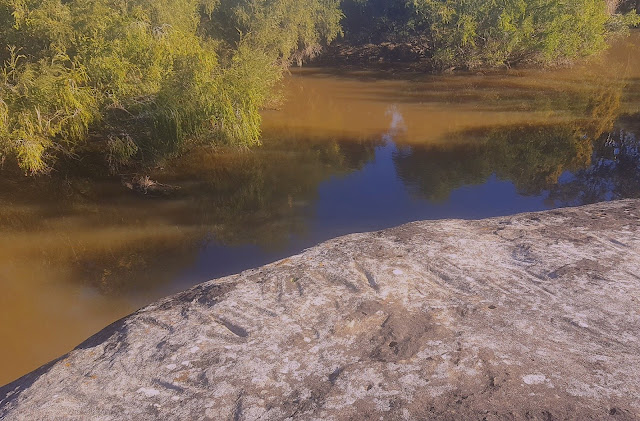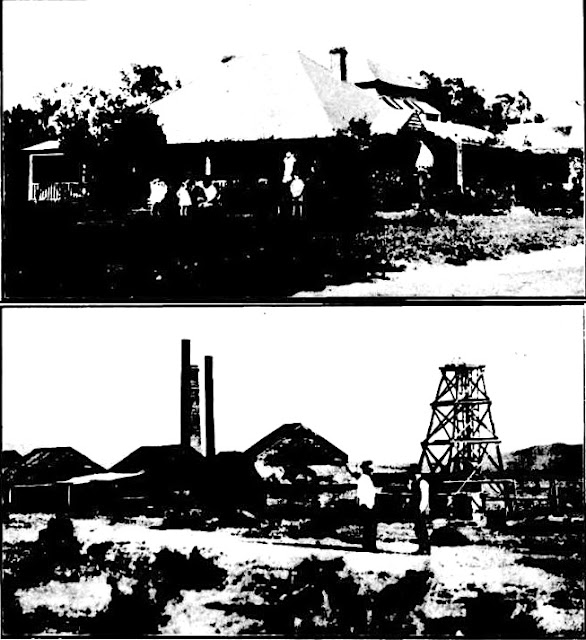Located in the South West region of the state of Western Australia, Busselton, is 220 km south-west of Perth, in the lands of the Noongar Aboriginal people. The Aboriginal name for Busselton is Undalup after the warrior and leader Undal. Busselton is situated on Bibbulmun country that is called Wadandi Boodja.
The town of Busselton was founded by the Bussell family in 1832, who emigrated from England on Warrior.
Wardandi Noongar Aboriginal People
Noongar people have lived in the south-west of Western Australia for at least 40,000 years, according to archaeological evidence.
A number of
writers recorded aspects of Noongar culture in the years after British settlement. Some writers attempted to be more systemic in recording Aboriginal culture, such as Daisy Bates, who lived closely with Aboriginal people.
It was Daisy Bates who used the term "Bibbulmun" for all the Aboriginal people of the South West of Western Australia, who were "linked by one language with local variations".
Early writers noted that Noongar people appeared to have some differences in material culture from their neighbours. For example, the kangaroo skin cloak was not used by tribes further inland. Noongar people also used a distinctive type of axe, called a kaju, as well as a saw-like knife, called a tapa.
There were also differences in initiation practices. For example, Wardandi people did not practice circumcision or sub-incision (genital mutilations), but the ritual of nasal septum piercing and cicatrisation (scarring) of the upper body (Bates).
 |
| People of the Bibbulmun, Western Mail (Perth, WA : 1885 - 1954), Thursday 25 December 1924 |
The Noongar people lived a hunter-gatherer lifestyle. Food sources included animals, insects, fish, reptiles and plants. However, the Wardandi also built fish traps (mungas) of brush across the creeks to trap fish, which were speared at low tide.
The Wardandi would suck the spike of the flowers of the Banksia grandis (Munghite), to obtain sweet nectar.
Stranded whales found along the coast would be eaten and the body of Wardandi Bibbulmun people rubbed with blubber.
 |
| Bibbulmun man, WA, Courier-Mail (Brisbane, Qld. : 1933 - 1954), Tuesday 28 January 1936 |
Robert Menli Lyon (born Robert Milne 1789–1874), a notable Western Australian settler, was one of the earliest outspoken advocates for Indigenous Australian
rights and welfare in the colony. He wrote:
". . . they are formed into distinct tribes; and that the whole country is divided into districts. But, though they have places to which they are accustomed to report for encampment, they have no fixed habitation, and generally move about from place to place in large bodies. Private property seems to be utterly unknown among them. The game and the fish are considered the common property of the tribe; and as every dispute between the different tribes is decided by the spear, they are utter strangers to the quirks and quibbles of the law."
Robert Lyon was also keen to negotiate a treaty between Aboriginal people and settlers, which displayed a lack
of knowledge about Aboriginal culture, as tribes had no leaders with whom a treaty might be negotiated.
The Wardandi Noongar people have a complex and often extensive network of kin, with patrilineal totemic local descent groups.
Wardandi
people travelled from far afield to the Vasse and Wonnerup Inlets to attend corroborees. Wardandi people moved to the hinterland during the cold months and returned to coastal regions in the warmer months.
 |
| Bibbulmun man, WA, Courier-Mail (Brisbane, Qld. : 1933 - 1954), Tuesday 28 January 1936 |
There were defined roles for men and women. The men were the hunters of the larger animals, such as kangaroos and emus, while the women were the gatherers, they collected seeds and dug for roots.
Many of the
regions locations are still named in the local Aboriginal language. For instance,
Yallingup is place of holes;
Quindalup is place of the quenda (bandicoot);
Wonnerup is place of the women’s digging stick and
Meelup is place of eyes.
Fire stick farming
was practiced in the area. Animals escaping the fire were easy sources of food. After the fire, roasted animals which did not escape were simply scooped up and eaten. And, after the bush was burnt, the growth of new grass would attract animals, which could be speared for food.
In the Busselton area, there are tracks or songlines which Wardandi people believed were travelled by creation beings. It was also believed that the characteristics of the landscape came about due to cosmic battles and struggles during the Dreamtime.
Across Australia, most Aboriginal groups
have stories of the Rainbow Serpent creating the waterways of the country. Bates reported that the “Woggal made all the big rivers of the southwest and that wherever it travelled it made a river.”
Traditional burial grounds of the Wardandi were in the coastal dunes between the Vasse-Wonnerup Estuary and Geographe Bay.
At Devil’s Lair cave, south of Margaret River, Noongar stone artefacts, animal bones, hearths, bone artefacts, human remains and three ground-bone beads
have been uncovered by archaeologists.
Read excellent research about Aboriginal people in the area
here
The French
French explorer Nicolas Baudin explored Western Australia in 1801. He named Geographe Bay and Cape Naturaliste after his ships
Géographe and
Naturaliste and the river Vasse after a sailor, Thomas Vasse, who was lost overboard
and believed to have drowned. The Vasse was also an early name for Busselton.
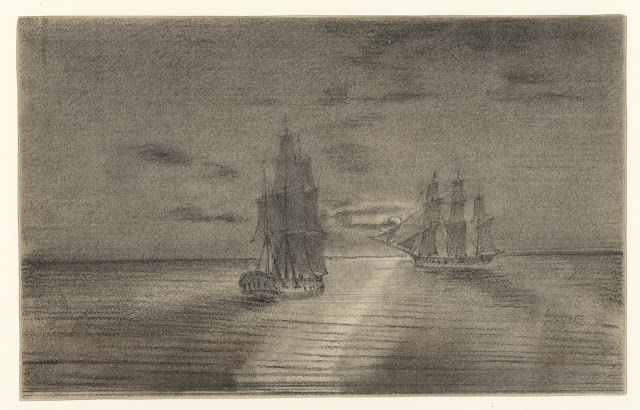 |
| Le Géographe et le Naturaliste - Charles Alexandre Lesueur - 1800 - 1804 |
British Settlement
British settlement of Western Australia occurred first at King George Sound in Albany in 1826, three years before the Swan River Colony.
The Bussell family arrived in the Swan River Colony aboard the
Warrior in 1830. The family first settled in the Augusta area but found living in the isolated area very difficult. The Bussell's then moved to Blackwood and
established a new property, which they named the
Adelphi.
In November 1831, John Bussell, accompanied by surveyor Robert Edwards, explored the region north of Adelphi as far as Geographe Bay and the Vasse River. During the expedition, they encountered Aboriginal people. Bussell wrote in his journal that:
"... because ... a judicious treatment of the Natives at Augusta has procured in them towards the Settlers a peaceful disposition, it will be satisfactory to learn that the population about to flow towards the Vasse has grounds for expecting that friendly reception ..."
John Bussell, impressed by
the open country, wrote that it resembled “an English park, only instead of deer, you will see an abundance of kangaroos”. (this is believed to be due to Aboriginal fire-stick farming)
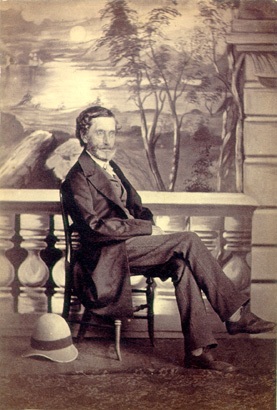 |
| An 1840s studio portrait of John Garrett Bussell |
In 1832, John Bussell received a land grant in the Vasse area. Others to also
receive a grant were: Captain Molloy, George Layman, James Turner, and the brothers, James and Henry Chapman. Four families moved to The Vasse in 1934, including the Bussell brothers John, Vernon, Alfred and Charles, George Layman and servants Elijah Dawson and Phoebe Bower; the Chapman brothers, and two soldiers.
Sandylands, one of
the first houses built in Busselton, was constructed in the area beginning in 1840 by Charles Bussell, the younger brother of John Bussell.
 |
| West Australian (Perth, WA : 1879 - 1954), Saturday 20 October 1951 |
Captain John Molloy became Busselton’s first Resident Magistrate from 1839 to 1861.
The Bussell family, however, had worked hard at
Adelphi and were not keen
to move again. It was after a fire destroyed their home in November 1833, that they decided to make the move to the Vasse (as Busselton was then called).
 |
| Fairlawn, Busselton, WA, was first owned by the John and Georgiana Molloy, the main homestead was built in 1840, and was the first dwelling built in the district. Sunday Times (Perth, WA : 1902 - 1954), Sunday 2 June 1929 |
In 1837, relations between Aboriginal people and settlers soured when a heifer was stolen and three Noongar men were killed in reprisal. That same year, the Turner family's house was burnt down and the Government store was raided (Jennings, 1983). However, despite the hostilities, Aboriginal people
continued to be employed on farms.
The impact of settlement on Aboriginal people was shattering. As land was fenced, they lost access to their traditional food sources. Disruptions to customary laws and lifestyles were also damaging. Aboriginal people also speared cattle and attacked settlers, leading to resentment and conflict.
Cattle Chosen
The Bussells established a cattle station which they named
Cattle Chosen (now in Bovell). The homestead was built in 1834-1836 for John and Charlotte Bussell.
"First crops did not always succeed, boots and clothes frayed into rags, fleas were everywhere, but each evening under crude slush lamps they found respite in books and music, and writing lively letters to friends and relatives in England. Before long they shipped to Perth their first surplus: sixty-two pounds (28 kg) of butter and half a ton of potatoes. Cheese was soon added to their produce. Their livestock multiplied, wheat growing succeeded and a horse-driven flour-mill was brought from England." here
The cattle station became one of the most prosperous stations in the colony.
 |
| Bussell family in the grounds of Cattle Chosen, Busselton, Photograph | 1867. SLWA |
The name Busselton was first officially used in June 1835. The town, which was surveyed in 1837, along with the Bussell Highway, are named in honour of the Bussell family.
In 1839 Busselton
had a population of 77.
The post office opened in 1842 and St Mary's Church in 1845.
 |
| Daily News (Perth, WA : 1882 - 1950), Thursday 28 November 1935 |
The Ship Tavern was of single storey and built from limestone with shingle roof in 1847 by George Guerrier.
During the 1850s convicts were sent to Busselton where they were used in various labours, including the timber industry.
Western Australia's first railway, built in 1871, was a privately owned timber line in Lockville, a few kilometres north of Busselton.
Wonnerup Property
George Layman, who established the Wonnerup property at Busselton (Wonnerup Wanna describing a woman's digging stick, up meaning water in Noongar), immigrated to Australia from England and first settled in Van Diemen's Land (Tasmania). After he was attacked and robbed of all his money by escaped convicts, Layman
decided to move to the Swan River Colony.
George built a homestead on his land, in 1837, where he lived with his wife, Mary, and children. A dairy and kitchen complete with cellar and large ovens were also soon built.
In February 1841, George Layman was speared to death by Wardandi elder Gaywal. Settlers at Busselton took up arms, resulting in many Noongar people being killed. (this is a mere outline of very complicated events)
George William Barnard arrived in the Busselton area in the 1850s and built a small store on the north side
of the present Commercial Hotel.
In February 1858, the Layman cottage burned to the ground. George's son, George Layman Jr, built the current house in 1859.
 |
| Wonnerup property at Busselton, WA, Western Mail (Perth, WA : 1885 - 1954), Saturday 14 August 1909 |
Ngilgi
Ngilgi was an Wardandi Bibbulmun child who was left behind in a potato field by her mother. She was born about 1855 and according to Heppingstone, this is how she came to live with the Bussell family:
“They decamped in such a hurry that a baby girl was left behind. None of the Nyungar women would claim the child which was left at the homestead when the tribe departed. The little one was named Nilgee and became the pet of the family. She received the same education as the other children until she was twelve when she returned or was taken back by the tribe. Until her death, she retained the cultured intonation of her early teaching and always spoke in perfect English. She spent most of her declining years at Guildford”.
Ngilgi stayed close to the Bussell family for the rest of her life. Although Ngilgi married according Aboriginal tradition,
at an early age, this marriage did not last.
Ngilgi moved to Welshpool reserve when it opened and had a government hut and plot there. Daisy Bates noted that Ngilgi had “thirty-two dogs, seven goats, a dozen fowls, four Aboriginal suitors and one half caste aspirant”.
Following a number of attacks on stock, blamed on dogs owned by Aboriginal people, the Dog Act (1885)
was introduced, requiring licensing of dogs. This created difficulties for Noongar people, as they used dogs for hunting food.
Daisy Bates worked with Ngilgi and recorded a vocabulary of 1400 Bibbulmun words as well as sentences.
 |
| Ngilgi of Busselton natives, Western Mail (Perth, WA : 1885 - 1954), Thursday 27 February 1936 |
 |
| Ngilgi, AN ABORIGINAL'S ADVENTURES. (1908, February 8). Western Mail (Perth, WA : 1885 - 1954) |
The original Courtroom and the Bond Store was built in 1860 by David Earnshaw, who was an inn keeper, local builder, and one of the first policemen in Busselton.
Construction of the Busselton Jetty began in 1865, as Busselton became a thriving port, exporting timber. The Busselton port closed in 1972.
The Dawson's and Sam Issaac
Elijah Dawson arrived in the Swan River Colony in 1830 aboard the
Warrior. Dawson had served with Captain John Molloy as a corporal during the Battle of Waterloo and
decided to follow him to Australia as his indentured servant. Later, Dawson was appointed Constable for Busselton and he bought the property on which
Westbrook was built in 1846.
Sam Isaacs Snr, was an African/American mariner (whaler) who arrived in the Busselton area around the mid-1830s. Isaacs had a relationship with an Aboriginal woman, who sadly died in childbirth. The son born in 1845,
was also named Sam Isaacs (Aboriginal name Yebble). Anne Dawson, who had given birth to a son, Elijah, breastfed both boys and they grew up together on the Dawsons’ property
Westbrook.
Sam stayed with the Dawson family for many years and worked on the property. In December 1876, Sam Isaacs was lauded for his bravery and became famous, when alongside 16-year-old Grace Bussell, he rescued passengers and crew from the sinking steamship,
Georgette, near Calgardup beach.
 |
| GRACE BUSSELL, al the age of I6, Sydney Morning Herald (NSW : 1842 - 1954), Thursday 30 May 1935 |
Sam Isaacs received a Bronze medal from the Royal Humane Society. Later, in 1897, he received 100 acres of land on the Margaret River.
 |
| Mural in Prince St Busselton, Wa of Sam Isaccs |
Caroline Maloney was a servant in the homes of the Bussell, Prinsep and Gale Families. Her mother was from the Busselton area and her father was a sealer from the West Indies.
1880s
By the 1880s, Busselton had a
regular mail and passenger coach service from Perth and Bunbury.
Busselton Railway Station (
originally located on Stanley Street) was built in 1894 and was used to transport timber and produce to Perth.
 |
| Busselton Railway Station, WA, Western Mail (Perth, WA : 1885 - 1954), Saturday 20 July 1907 |
1890s
The Freemasons' Hotel opened 1890,
the name later changed to Commercial Hotel.
Carinia Sayers, a Wardandi Noongar man lived at Cattle Chosen with the Bussell Family. He took up land where the Busselton Primary School now stands. In 1891, Carinia Sayers married Flora and had seven children. Two of their children were Servicemen who fought in World War 1. Both Carinia and Flora wished for their land to be used as a site for an educational institution, which occurred after the death of Flora in 1955. OBITUARY MR CARINIA SAYERS
here A Federation style Court House was built in 1897.
Busselton developed as a resort town and became known as the sanatorium of Western Australia.
 |
| Clare's Weekly (Perth, WA : 1897 - 1899), Saturday 10 December 1898 |
 |
| Busselton from the lighthouse, WA, 1899, SLWA |
1900
 |
| Horse and coach starting from Busselton for the caves, WA, Western Mail (Perth, WA : 1885 - 1954), Saturday 15 March 1902 |
 |
| Mrs Ost's private boarding house, Busselton, WA, Western Mail (Perth, WA : 1885 - 1954), Saturday 10 January 1903 |
 |
| Western Mail (Perth, WA : 1885 - 1954), Saturday 10 January 1903 |
 |
| Western Mail (Perth, WA : 1885 - 1954), Saturday 10 January 1903 |
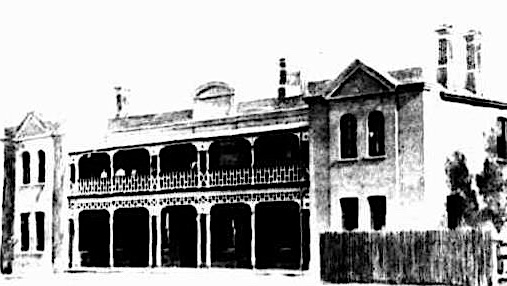 |
| Hotel Esplanade , Busselton, WA, Western Mail (Perth, WA : 1885 - 1954), Saturday 10 January 1903 |
 |
| The "Ballarat", was made in Victoria in 1871, it was the first locomotive to be used in WA. At Wonnerup, it was used to haul timber and then abandoned in the sand dunes. Later it was used by children to play on in a Busselton park, WA. c1908 |
 |
| Busselton jetty in 1908, WA |
In 1909 a railway line form Busselton to Nannup was opened.
WWI
 |
| Albert Henry Sayers, born 07-1891, Guildford to Carlos (who was of Aboriginal descent) & Flora Sayers (nee Thompson) of Caves Rd Busselton. Occupation: Fireman from Busselton. Sapper 3215 aged 26, he enlisted 12 March 1917 in Perth. Died of pneumonia influenza at Woodman's Pt. One of the two Western Australians removed in a dying condition from the 'Boonah', 12 December 1918. |
 |
| Dudley Maurice Anderson, Service No. 380, Signaller 11th Battalion Machine Gun Company. Son of Mr. A.T. Anderson of Adelaide St, Busselton. Aged 20 years, he embarked from Albany with the 1st Convoy on 2 November 1914. He was wounded in action (gunshot wounds) on 30 April 1915 at Gallipoli (gunshot wounds) and died from those wounds on the 23 May 1915 at Bombay Presidency Hospital, Alexandria, Egypt |
In 1915, Arthur Breeden of Busselton would start a 14-hour journey to Augusta delivering mail by horse and cart.
 |
| Busselton Carnival, WA, Mirror (Perth, WA : 1907 - 1910), Friday 25 March 1910 |
 |
| Old Bill and Dorrie, Busselton, WA, Mirror (Perth, WA : 1907 - 1910), Friday 25 March 1910 |
 |
| BUSSELTON TEAM. WINNERS OF THE BERRY SHIELD COMPETITION. Western Mail (Perth, WA : 1885 - 1954), Friday 27 March 1914 |
The News
William Mann moved to Busselton in 1903, where
he established the newspaper, the
South-Western News. He would remain the proprietor and editor of the publication until 1935.
 |
| Mann family members and others in vehicles parked outside South Western News office in Prince Street, Busselton, ca. 1915, SLWA |
 |
| Children paddling at the beach, Busselton, Photograph | ca. 1915, SLWA |
1920s
 |
| Sandcastle building competition on a Busselton beach, ca. 1920, SLWA |
The railway line from Busselton to Margaret River was completed in the early 1920s.
The Group Settlement Scheme, operated in the 1920s as a Government assisted migration scheme in Western Australia, aimed at increasing Western Australia’s population and economy.
On
arrival, migrants were allotted land around Northcliffe, Busselton and Manjimup, that required back-breaking work to clear ready for farming.
 |
| Settler's cottage, Group Settlement Scheme, WA, Western Mail (Perth, WA : 1885 - 1954), Thursday 21 December 1922 |
Transport
"From running a livery stables many years ago, Mr. P. S. Bignell, of Busselton, now conducts one of the most advanced service stations in the State. His garage at Busselton cost over £3,000. From 1903 to 1908 Mr Bignell maintained the service between the township and the Yallingup Caves in the coach shown in our picture. In 1908 he became the owner and driver of the first car in the south-West. To-day a Chevrolet charabanc takes him over the caves road." |
| Western Mail (Perth, WA : 1885 - 1954), Thursday 4 August 1927 |
 |
| Beach House Busselton 1929, Geographe House corner West Street and Geographe Bay Road. Looking North West. Busselton Libraries |
1930s |
| Esplanade Hotel, Busselton, ca. 1930, SLWA |
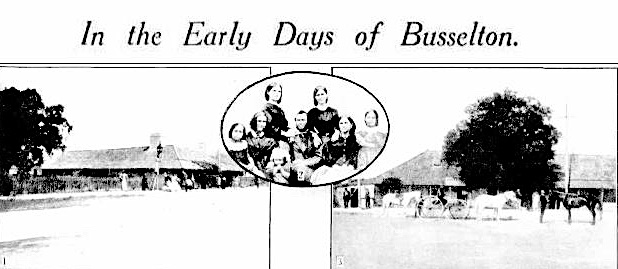 |
| 1. Commercial Hotel, 2. Mr. and Mrs. David Earnshaw with their six daughters, photographed over 70 years ago (3) The original Vasse Hotel, of which nothing now remains. Busselton, NSW, Western Mail (Perth, WA : 1885 - 1954), Thursday 5 May 1932 |
 |
| CATTLE CHOSEN, THE OLD HOME OF THE BUSSELLS, WHICH IS NOW OWNED BY MR. F. B. VINES. Western Mail (Perth, WA : 1885 - 1954), Thursday 23 February 1933 |
 |
| PROSPECT VILLA, THE HOME OF THE MESSRS. PRIES, ONE OF THE OLDEST HOUSES IN BUSSELTON. Western Mail (Perth, WA : 1885 - 1954), Thursday 23 February 1933 |
 |
| THE OLD MILL AT INLET PARK, BUSSELTON, Western Mail (Perth, WA : 1885 - 1954), Thursday 23 February 1933 |
 |
| Camping at the beach at Busselton, WA, Western Mail (Perth, WA : 1885 - 1954), Thursday 23 February 1933 |
 |
| Western Mail (Perth, WA : 1885 - 1954), Thursday 23 February 1933 |
 |
| LOCKEVILLE, ONCE THE HOME OF THE LOCKE FAMILY, Western Mail (Perth, WA : 1885 - 1954), Thursday 7 December 1933 |
 |
| Nina Glindon Layman- the first female member of a Road Board in WA. Nina was on the Sussex Road Board from April 1935- March 1937. The Sussex Road district was the first form of local government in the Busselton region.Western Mail (Perth, WA : 1885 - 1954), Thursday 9 May 1935 |
 |
| Daily News (Perth, WA : 1882 - 1950), Saturday 22 June 1935 |
 |
| Opening of the Fire Station in Busselton, W.A. - 1 June 1936, Kaye |
 |
| Western Mail (Perth, WA : 1885 - 1954), Thursday 18 February 1937 |
 |
| Western Mail (Perth, WA : 1885 - 1954), Thursday 18 February 1937 |
 |
| Western Mail (Perth, WA : 1885 - 1954), Thursday 18 February 1937 |
 |
| Western Mail (Perth, WA : 1885 - 1954), Thursday 18 February 1937 |
 |
| Queen St, Busselton, WA, Western Mail (Perth, WA : 1885 - 1954), Thursday 10 November 1938 |
 |
| Glimpses of the jetty and the swimming area. Busselton, WA, Western Mail (Perth, WA : 1885 - 1954), Thursday 10 November 1938 |
 |
| The Regal Theatre at Busselton was closed in April 1958, and it was demolished. Western Mail (Perth, WA : 1885 - 1954), Thursday 10 November 1938 |
 |
| Daily News (Perth, WA : 1882 - 1950), Thursday 1 December 1938 |
 |
| Daily News (Perth, WA : 1882 - 1950), Thursday 1 December 1938 |
1940s
 |
| This factory was erected by the West Australian State Government 1912, and is situated on the bank of the Vasse River in the town ofBusselton., Blackwood Times (Greenbushes, WA : 1905 - 1955), Friday 2 October 1942 |
WWII
 |
| T H Edwards, born Dibblebury, Shropshire, England, took up land through Group Settlement at No. 48 Busselton was wounded in trench by a shell burst from enemy artillery fire at Hill 200, Ulu Pandan. Died from wounds 12.02.1942. Mail(Perth, WA : 1885 - 1954), Thursday 1 January 1942 |
Lance Corporal John Hill, died on active service during the Second World War. A member of the Wardandi Nation. He lived in a cottage named “Snake Gully” in Busselton. John, and his brothers, Roy, and Harold volunteered to serve their nation. John Hill enlisted in the Second Australian Imperial Force on 23 October 1940. Harold enlisted in the Royal Australian Navy, and Roy enlisted in the Royal Australian Air Force. (see
more)
1950s
 |
| Western Mail (Perth, WA : 1885 - 1954), Thursday 25 October 1951 |
 |
| A street of houses, East Busselton Western Mail (Perth, WA : 1885 - 1954), Thursday 25 October 1951 |
 |
| Busselton football team, winners of the South-West schools' football carnival Western Mail (Perth, WA : 1885 - 1954), Thursday 8 October 1953 |
 |
| The Queen at Busselton, WA, Manjimup and Warren Times (WA : 1927 - 1954), Wednesday 7 April 1954 |
1960s
The Busselton Margaret Times reported on 24 October 1968:
"According to a WA Surfboard Riders' Association official who visited Busselton recently it seems likely this district has the first Aboriginal surfboard rider in the South West - possibly WA.
He is 3rd year high school student Bill Webb (16) son of Mr and Mrs G Webb of Kealy, who has been a surfing enthusiast for about 4 months. Bill, together with his 2 schoolmates, Wayne Evans and Brian Gannaway, surf every chance they get."
Around Busselton
 |
| Busselton Visitor Info Centre, in the old lighthouse, WA |
 |
| Federation style Court House was built in 1897, Busselton, WA |
 |
| Construction of the Busselton Jetty began in 1865. Further extensions were made throughout years, Busselton, WA |
 |
| The ArtGeo Gallery in Busselton, Western Australia, occupies the former Agriculture Building dating from the 1920s |
 |
| Take a trip, Busselton Tram Co – The Historical Adventure, Busselton, WA |
 |
| Old Busselton Gaol, Busselton, WA |
 |
| Busselton Jetty, WA |
 |
| Armstrong Cottage, built 1894, Adelaide Street, Busselton, WA |
 |
| The Weld Hall was built during the course of 1874-1881, Busselton, WA |
 |
| Villa Carlotta, Adelaide Street, Busselton, WA, Villa Carlotta, also known as Ithaca, was built in the mid-1890s by prominent gold-rush mining engineer Frank Backhouse |
 |
| Bovell cottage, built in 1882, Busselton, WA |
 |
| Wonnerup House, is less than 10 km north of Busselton, WA, the house built in 1859 |
 |
| St Mary’s Anglican, Busselton, oldest stone church in WA (built 1844-45) |
 |
| Old Busselton Cemetery, WA |
 |
| The heritage listed Ludlow Forestry Mill and Settlement, Western Australia. Calistemon |
 |
| The old police quarters (1906) at the ArtGeo Cultural Complex in Busselton, Western Australia, David Stanley |
 |
| The Esplanade Hotel at Busselton WA, was built 1898 |
Things To Do and Places To Go
ArtGeo Cultural Complex
Wonnerup House
Museums & Historical Sites